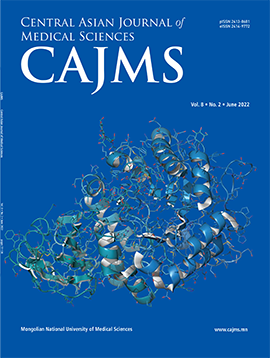Determination of Survival Time Following Isolated Head Trauma by Histopathological Method
DOI:
https://doi.org/10.24079/cajms.2018.12.005Keywords:
Skull and Brain Trauma, Survival Time, Forensic Medicine, Histopathology, MSB (Martius Scarlet Blue)Abstract
Objectives: The objectives of this study were determine the demographic characteristics of patients who died from isolated head injuries having no surgery and to determine their survival time based on histopathological changes in the injury hematoma and brain. Methods: Between 2016 and 2017 the Department of Forensic Medicine of the National Institute Forensic Science recorded 3640 deaths of which 757 cases had skull and brain trauma. A subset of 372 of these patients with isolated head trauma who did not have surgery were analyzed. The tissues from 30 of these patients underwent histopathological analysis to determine the time from injury to death. Results: Out of 372 cases studied, 152 (83%) were male, 32 (17%), were female (male to female ratio 5:1) and most (n=53, 28.8%) were within 40-49 years of age (mean age 42±15.9). Trauma to the anterior head was the most common location of injury (257, 69.1%). We identified 30 cases to estimate time from injury to death by histological examination using Martius Scarlet Blue stain. Among these cases 10 died between 0-6 hours after head trauma, 2 died between 6-12 hours, 13 cases died between 12-18 hours, 3 cases died between 18- 24 hours, 1 case died 24-48 hours, and 3 cases died 48 hours after head injury. Conclusion: Males who suffered death from traumatic head injuries from blunt objects were most frequently identified in our research. Brain edema, subarachnoid hemorrhage, frontal skull fracture and brain contusion were most common. The interval of time from the head trauma to death was determined by the age of the fibrin using histochemistry stain.
Downloads
186
Downloads
Published
How to Cite
Issue
Section
License
Copyright (c) 2018 Mongolian National University of Medical Sciences

This work is licensed under a Creative Commons Attribution-NonCommercial 4.0 International License.




